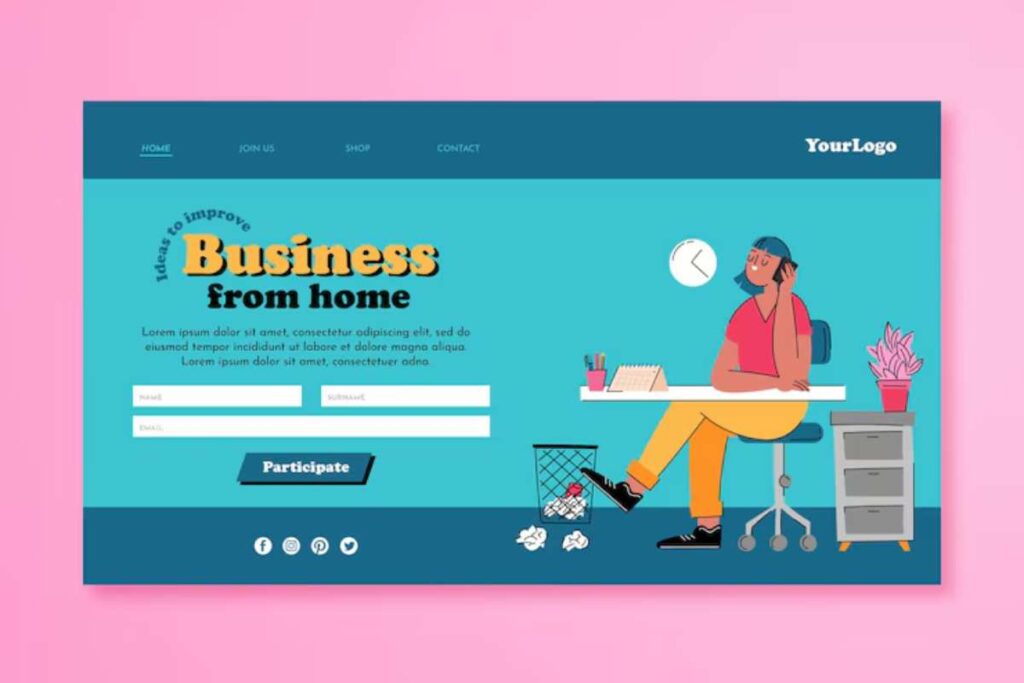Introduction
Landing pages are critical tools for businesses aiming to convert website visitors into leads or customers. Whether for PPC campaigns, email marketing, or product launches, a well-designed landing page can drive conversions. However, many businesses make avoidable mistakes that undermine their effectiveness. This article outlines seven common landing page mistakes, organized into sections: the role of landing pages, the mistakes, and strategies to avoid them. By addressing these pitfalls, businesses can optimize their landing pages for better results.
The Role of Landing Pages
Landing pages are standalone web pages designed for a specific marketing goal, such as capturing leads or driving sales.
-
Purpose: Unlike general website pages, landing pages focus on a single call-to-action (CTA), like signing up for a newsletter or purchasing a product.
-
Impact: A 2024 Unbounce study found that optimized landing pages can boost conversion rates by up to 40% compared to generic pages.
-
Applications: Used in PPC ads, social media campaigns, or email funnels to guide visitors toward a desired action.
7 Common Landing Page Mistakes
These frequent errors can reduce conversions and waste marketing budgets.
1. Unclear Call-to-Action (CTA)
A vague or missing CTA confuses visitors about the next step.
-
Issue: Using generic phrases like “Click Here” or having multiple CTAs dilutes focus.
-
Example: A landing page with both “Buy Now” and “Learn More” buttons splits attention.
-
Impact: A 2023 HubSpot report noted that pages with one clear CTA convert 20% better than those with multiple CTAs.
2. Poor Design and Usability
Cluttered or unappealing designs deter visitors.
-
Issue: Overloaded visuals, small fonts, or non-mobile-friendly layouts frustrate users.
-
Example: A page with too many images may load slowly, causing 53% of mobile users to abandon it, per 2024 Google data.
-
Impact: Poor usability can increase bounce rates by up to 30%.
3. Ignoring Target Audience
Failing to tailor the page to the audience reduces relevance.
-
Issue: Generic messaging doesn’t address specific pain points or needs.
-
Example: A landing page for a B2B software targeting small businesses but using enterprise-level jargon.
-
Impact: Misaligned content lowers conversions, as 70% of users prefer personalized experiences, per a 2024 Epsilon study.
4. Weak or Unconvincing Copy
Unpersuasive or lengthy copy fails to engage visitors.
-
Issue: Copy that doesn’t highlight benefits or includes jargon can bore or confuse readers.
-
Example: Listing product features without explaining how they solve problems.
-
Impact: A 2023 Copyblogger study found that benefit-focused copy boosts conversions by 25%.
5. Slow Loading Times
Pages that take too long to load drive visitors away.
-
Issue: Large images, unoptimized code, or poor hosting cause delays.
-
Example: A page taking over 3 seconds to load loses 40% of visitors, per 2024 Google PageSpeed Insights data.
-
Impact: Slow load times directly reduce conversions and harm SEO rankings.
6. Lack of Trust Signals
Visitors hesitate to act without proof of credibility.
-
Issue: Missing testimonials, reviews, or security badges (e.g., SSL certificates) erodes trust.
-
Example: A checkout page without customer reviews or a “Secure Payment” badge.
-
Impact: A 2024 BrightLocal survey showed 68% of users trust pages with visible reviews more.
7. Not Testing or Optimizing
Failing to test and refine landing pages limits performance.
-
Issue: Not using A/B testing or analytics to identify weaknesses misses opportunities for improvement.
-
Example: Keeping the same headline despite low conversion rates.
-
Impact: Unoptimized pages underperform, with A/B testing improving conversions by up to 30%, per a 2023 VWO study.
Strategies to Avoid These Mistakes
Proactive steps can help businesses create high-performing landing pages.
-
Clarify the CTA: Use action-oriented phrases like “Get Your Free Quote” and limit to one CTA per page.
-
Optimize Design: Ensure mobile responsiveness, use clean layouts, and test with tools like Google’s Mobile-Friendly Test.
-
Know Your Audience: Research your target market and tailor copy to their needs, using tools like Google Analytics for insights.
-
Craft Compelling Copy: Focus on benefits, keep text concise, and use bullet points for readability.
-
Improve Load Speed: Compress images, use fast hosting, and aim for a Google PageSpeed score above 90.
-
Build Trust: Include testimonials, trust badges, and customer reviews to boost credibility.
-
Test Continuously: Run A/B tests on headlines, CTAs, and designs, and track performance with tools like Google Optimize or Hotjar.
Conclusion
Avoiding these seven common landing page mistakes—unclear CTAs, poor design, ignoring the audience, weak copy, slow load times, lack of trust signals, and not testing—can significantly boost conversions and ROI. By prioritizing user experience, relevance, and optimization, businesses can create landing pages that drive action and support marketing goals. Start by auditing your existing pages for these issues, then implement targeted improvements to see measurable results.

